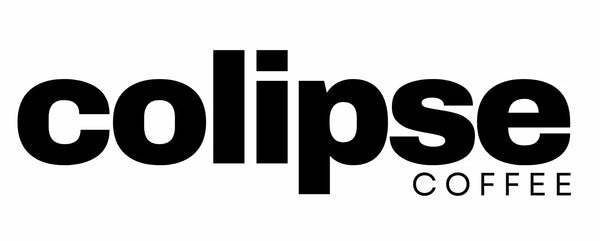Coffee Buying Guide: How to Choose the Best Coffee Beans

9 Best Coffee Subscription Services in the U.S.
The best coffee subscription is subjective because it depends on individual preferences for bean variety, roast level, freshness, and price. The best coffee bean subscription balances cost, quality, discounts, and convenience to suit many people. Some people buy coffee subscriptions for themselves, while others gift three, six, or twelve month packages for holidays, birthdays, or special occasions. When choosing the...
9 Best Coffee Subscription Services in the U.S.
The best coffee subscription is subjective because it depends on individual preferences for bean variety, roast level, freshness, and price. The best coffee bean subscription balances cost, quality, discounts, and convenience to suit many people. Some people buy coffee subscriptions for themselves, while others gift three, six, or twelve month packages for holidays, birthdays, or special occasions. When choosing the...
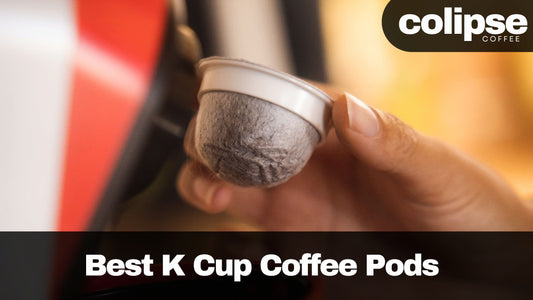
Best K-Cup® Coffee: Top 7 Pods for Keurig® Brewers
The best Keurig® K-Cup® coffee combines 100% Arabica beans, specialty-grade quality, consistent grind size, an optimal roast profile, balanced flavor, ethical sourcing, biodegradable packaging, and a recent roast date. What’s “best” ultimately depends on personal preferences, as options vary in flavor, roast level, caffeine strength, price, dietary needs, brand preference, and compatibility with Keurig® Classic, Keurig® 2.0, or other single-serve...
Best K-Cup® Coffee: Top 7 Pods for Keurig® Brewers
The best Keurig® K-Cup® coffee combines 100% Arabica beans, specialty-grade quality, consistent grind size, an optimal roast profile, balanced flavor, ethical sourcing, biodegradable packaging, and a recent roast date. What’s “best” ultimately depends on personal preferences, as options vary in flavor, roast level, caffeine strength, price, dietary needs, brand preference, and compatibility with Keurig® Classic, Keurig® 2.0, or other single-serve...
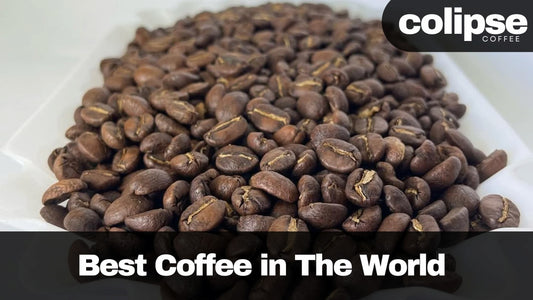
Top 10 Best Coffee in The World
The best coffee in the world is coffee with exceptional flavor, aroma, and quality, often sourced from Ethiopia, Colombia, Jamaica, or Panama. The best coffee is subjective because taste depends on individual preferences shaped by origin, roast, brewing method, and palate. Some of the most iconic and popular coffees worldwide include Ethiopia Yirgacheffe, Jamaica Blue Mountain, Kenya AA, Sumatra Mandheling,...
Top 10 Best Coffee in The World
The best coffee in the world is coffee with exceptional flavor, aroma, and quality, often sourced from Ethiopia, Colombia, Jamaica, or Panama. The best coffee is subjective because taste depends on individual preferences shaped by origin, roast, brewing method, and palate. Some of the most iconic and popular coffees worldwide include Ethiopia Yirgacheffe, Jamaica Blue Mountain, Kenya AA, Sumatra Mandheling,...
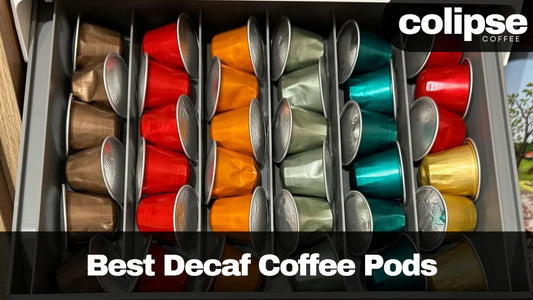
Best Decaf Coffee Pods: Top 7 Brands
The best decaf coffee pods depend on your taste preferences, caffeine sensitivity, budget, and brewing system, whether you use Keurig K-Cups, Nespresso capsules, Dolce Gusto, or another single-serve machine. The best decaf coffee pods deliver rich flavor without bitterness, using Swiss Water® Process or CO₂-processed Arabica beans for smooth, chemical-free results. However, there’s no single best decaf coffee pod for...
Best Decaf Coffee Pods: Top 7 Brands
The best decaf coffee pods depend on your taste preferences, caffeine sensitivity, budget, and brewing system, whether you use Keurig K-Cups, Nespresso capsules, Dolce Gusto, or another single-serve machine. The best decaf coffee pods deliver rich flavor without bitterness, using Swiss Water® Process or CO₂-processed Arabica beans for smooth, chemical-free results. However, there’s no single best decaf coffee pod for...
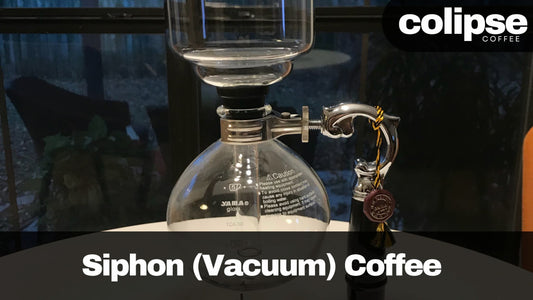
Siphon Coffee: Definition, How It Works, Brewin...
Siphon coffee is a vacuum brewing method that uses heat, pressure, and vacuum to brew coffee. Siphon coffee originated in the 1830s when Loeff of Berlin patented the first siphon coffee brewer in 1830. A siphon coffee maker, or vacuum coffee maker, brews coffee by using pressurised water vapour between two glass chambers. It features a globe-shaped lower chamber, a...
Siphon Coffee: Definition, How It Works, Brewin...
Siphon coffee is a vacuum brewing method that uses heat, pressure, and vacuum to brew coffee. Siphon coffee originated in the 1830s when Loeff of Berlin patented the first siphon coffee brewer in 1830. A siphon coffee maker, or vacuum coffee maker, brews coffee by using pressurised water vapour between two glass chambers. It features a globe-shaped lower chamber, a...
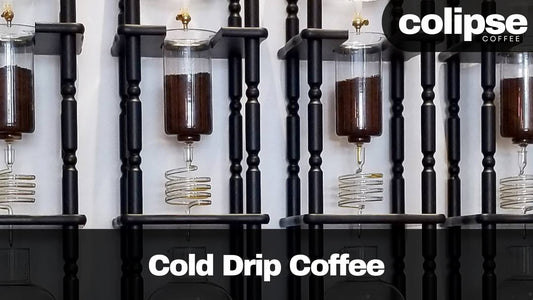
Cold Drip Coffee: Definition, How It Works, Bre...
Cold drip coffee is made by slowly dripping cold water through coffee grounds for hours to create a chilled concentrate. A cold drip coffee works through a controlled process that uses gravity and precise flow. It requires a cold drip tower, ground coffee, filters, and cold water. Cold drip coffee originated in Kyoto, Japan, evolving from cold brew methods introduced...
Cold Drip Coffee: Definition, How It Works, Bre...
Cold drip coffee is made by slowly dripping cold water through coffee grounds for hours to create a chilled concentrate. A cold drip coffee works through a controlled process that uses gravity and precise flow. It requires a cold drip tower, ground coffee, filters, and cold water. Cold drip coffee originated in Kyoto, Japan, evolving from cold brew methods introduced...
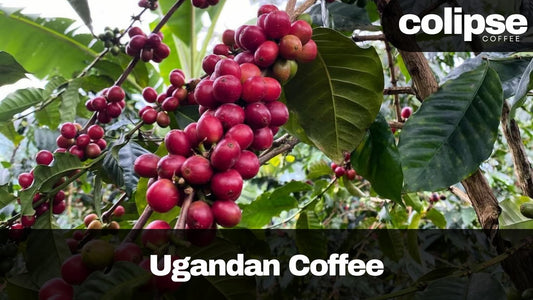
Uganda Coffee: Growing Regions, Production, and...
Ugandan coffee is grown in Uganda, which is the world's sixth-largest coffee producer and Africa's leading exporter. Uganda grows mainly Robusta (85%) and Arabica (15%) coffee, with key varieties including Nganda, Erecta, Typica, SL14, SL28, Kent, and Bugishu. Coffee in Uganda is grown mainly in regions like Buganda, Rwenzori, Bugisu, and Sebei, with Robusta thriving in lowlands and Arabica in...
Uganda Coffee: Growing Regions, Production, and...
Ugandan coffee is grown in Uganda, which is the world's sixth-largest coffee producer and Africa's leading exporter. Uganda grows mainly Robusta (85%) and Arabica (15%) coffee, with key varieties including Nganda, Erecta, Typica, SL14, SL28, Kent, and Bugishu. Coffee in Uganda is grown mainly in regions like Buganda, Rwenzori, Bugisu, and Sebei, with Robusta thriving in lowlands and Arabica in...
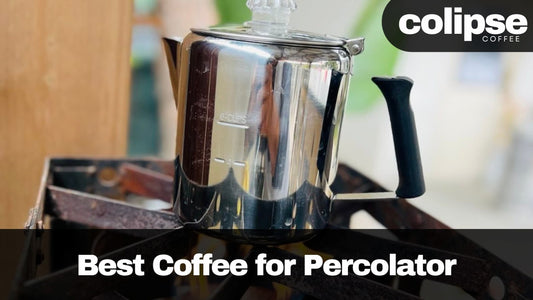
Best Coffee for Percolator: Top 7 Brands
The best coffee for a percolator varies based on your personal preferences, price range, and how many cups you brew daily. The best ground coffee for percolators is freshly roasted Arabica with a medium to dark roast and a coarse or medium-coarse grind. However, the is no single "best" coffee brand for percolators, as preferences vary by origin, flavor, roast...
Best Coffee for Percolator: Top 7 Brands
The best coffee for a percolator varies based on your personal preferences, price range, and how many cups you brew daily. The best ground coffee for percolators is freshly roasted Arabica with a medium to dark roast and a coarse or medium-coarse grind. However, the is no single "best" coffee brand for percolators, as preferences vary by origin, flavor, roast...
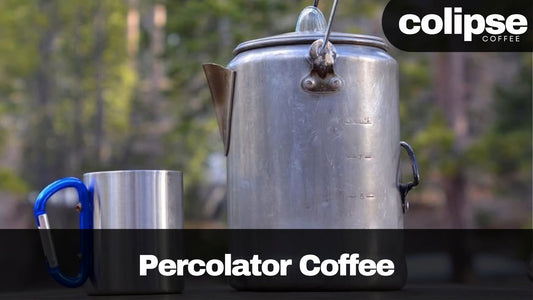
Percolator Coffee: Definition, How It Works, an...
Percolator coffee is a bold, traditional brew made by repeatedly cycling boiling water through coarse grounds. Percolator coffee is strong, aromatic, and rich in caffeine, oils, and bold flavor. A coffee percolator is a durable brewing device that uses gravity or pressure to make coffee and comes in stovetop or electric models. A coffee percolator brews by extracting flavor through...
Percolator Coffee: Definition, How It Works, an...
Percolator coffee is a bold, traditional brew made by repeatedly cycling boiling water through coarse grounds. Percolator coffee is strong, aromatic, and rich in caffeine, oils, and bold flavor. A coffee percolator is a durable brewing device that uses gravity or pressure to make coffee and comes in stovetop or electric models. A coffee percolator brews by extracting flavor through...
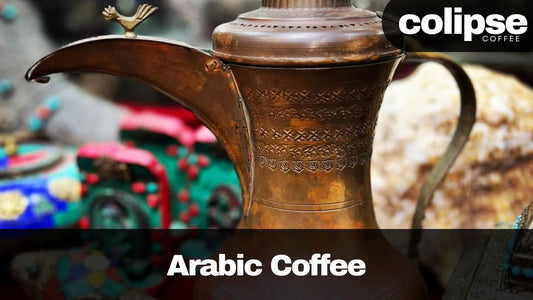
Arabic Coffee: Origin, Flavor, Caffeine, and Br...
Arabic coffee, known as qahwa, gahwa, or kahwa, is a traditional Middle Eastern brew made from lightly roasted Arabica beans and cardamom. Arabic coffee symbolize hospitality across the Arab world and served without sugar in small cups during cultural rituals, especially in the Gulf and Levant. Arabic coffee traditions include making the coffee with light roasted beans and cardamom in...
Arabic Coffee: Origin, Flavor, Caffeine, and Br...
Arabic coffee, known as qahwa, gahwa, or kahwa, is a traditional Middle Eastern brew made from lightly roasted Arabica beans and cardamom. Arabic coffee symbolize hospitality across the Arab world and served without sugar in small cups during cultural rituals, especially in the Gulf and Levant. Arabic coffee traditions include making the coffee with light roasted beans and cardamom in...
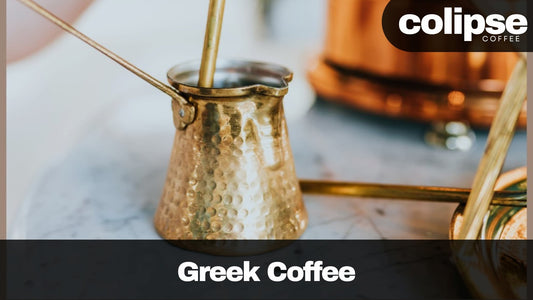
Greek Coffee: Origins, Preparation, and Best Br...
Greek coffee is a traditional method of brewing unfiltered, finely ground coffee using a briki, like the ibrik in Turkish coffee. Greek coffee delivers a rich, bittersweet brew with thick foam, velvety body, and mild acidity. To make Greek coffee at home, use finely ground Arabica, cold water, and a briki. Simmer slowly without boiling to create foam, then pour...
Greek Coffee: Origins, Preparation, and Best Br...
Greek coffee is a traditional method of brewing unfiltered, finely ground coffee using a briki, like the ibrik in Turkish coffee. Greek coffee delivers a rich, bittersweet brew with thick foam, velvety body, and mild acidity. To make Greek coffee at home, use finely ground Arabica, cold water, and a briki. Simmer slowly without boiling to create foam, then pour...
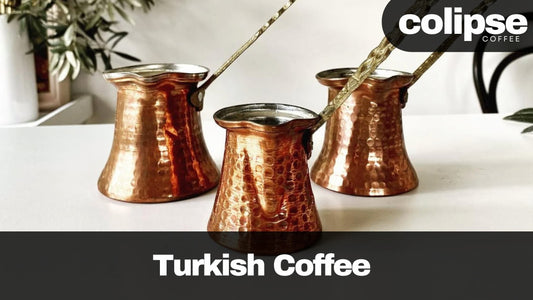
Turkish Coffee: Origins, Flavor, Preparation, a...
Turkish coffee is a traditional immersion brewing method that uses very finely ground beans simmered unfiltered in a cezve over low heat, either on a stove or in hot sand. Turkish coffee evolved into a cultural ritual served during gatherings, marriage proposals, and fortune-telling as a symbol of hospitality and tradition. It delivers a bold, intense, slightly bitter and earthy...
Turkish Coffee: Origins, Flavor, Preparation, a...
Turkish coffee is a traditional immersion brewing method that uses very finely ground beans simmered unfiltered in a cezve over low heat, either on a stove or in hot sand. Turkish coffee evolved into a cultural ritual served during gatherings, marriage proposals, and fortune-telling as a symbol of hospitality and tradition. It delivers a bold, intense, slightly bitter and earthy...
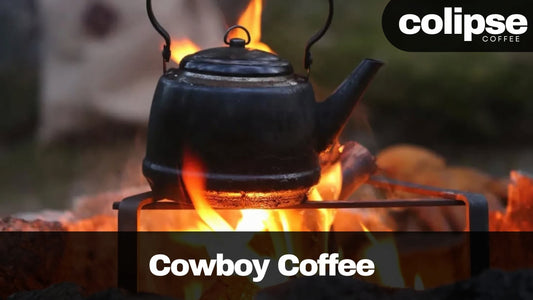
Cowboy Coffee: Definition, Taste, and How to Make
Cowboy coffee is a bold, traditional brewing method rooted in 19th-century American frontier life, where coarse grounds are boiled over fire and settled by gravity. Cowboy coffee has smoky, bitter flavor from boiled coarse grounds and creates a strong, rustic cup. An average 8-ounce (237 ml) cup of cowboy coffee contains 100–200 milligrams (mg) of caffeine, depending on brewing time,...
Cowboy Coffee: Definition, Taste, and How to Make
Cowboy coffee is a bold, traditional brewing method rooted in 19th-century American frontier life, where coarse grounds are boiled over fire and settled by gravity. Cowboy coffee has smoky, bitter flavor from boiled coarse grounds and creates a strong, rustic cup. An average 8-ounce (237 ml) cup of cowboy coffee contains 100–200 milligrams (mg) of caffeine, depending on brewing time,...
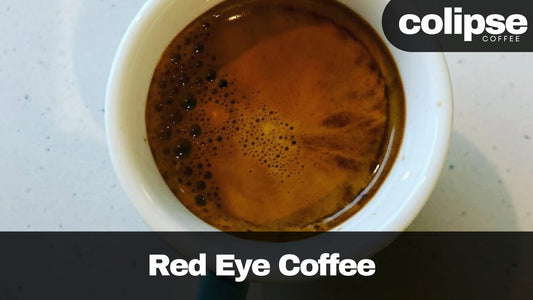
Red Eye Coffee: Definition, Types, Caffeine, an...
Red Eye coffee is a bold American drink that blends drip coffee and a shot of espresso to boost caffeine and energy. The term “Red Eye” coffee is named after overnight flights because it symbolizes the fatigue and red eyes passengers often experience. Different types of Red Eye coffee refer to shot count. A Red Eye has one espresso shot,...
Red Eye Coffee: Definition, Types, Caffeine, an...
Red Eye coffee is a bold American drink that blends drip coffee and a shot of espresso to boost caffeine and energy. The term “Red Eye” coffee is named after overnight flights because it symbolizes the fatigue and red eyes passengers often experience. Different types of Red Eye coffee refer to shot count. A Red Eye has one espresso shot,...
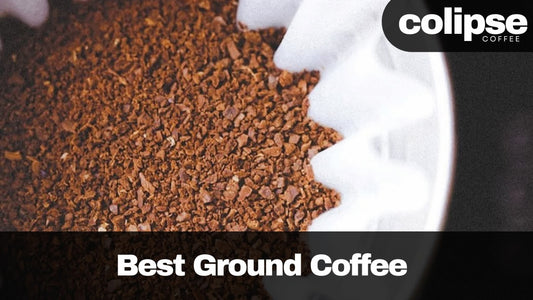
7 Best Ground Coffee Brands
The best ground coffee is 100% Arabica, specialty grade, and freshly roasted to order. No single brand is best because preferences vary by origin, brew method, grind size, flavor, roast level, price, and availability. Some brands are found in stores, while others are sold only online. For the best ground coffee, prioritize freshness. Grinding accelerates flavor loss, so choose brands...
7 Best Ground Coffee Brands
The best ground coffee is 100% Arabica, specialty grade, and freshly roasted to order. No single brand is best because preferences vary by origin, brew method, grind size, flavor, roast level, price, and availability. Some brands are found in stores, while others are sold only online. For the best ground coffee, prioritize freshness. Grinding accelerates flavor loss, so choose brands...
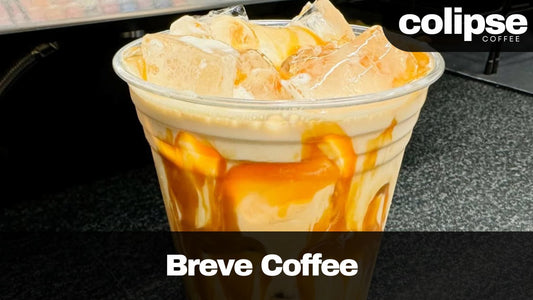
Breve Coffee: Types, Calories, Brewing, and Bes...
A breve coffee, or caffè breve, is an American espresso drink made with espresso shot and steamed half-and-half instead of milk or water. Breve coffee has a rich, creamy taste with natural sweetness, low acidity, and a smooth espresso flavor. It comes in several flavored variations including Irish cream, caramel, vanilla, mocha, and iced breves. Breve coffee is high in...
Breve Coffee: Types, Calories, Brewing, and Bes...
A breve coffee, or caffè breve, is an American espresso drink made with espresso shot and steamed half-and-half instead of milk or water. Breve coffee has a rich, creamy taste with natural sweetness, low acidity, and a smooth espresso flavor. It comes in several flavored variations including Irish cream, caramel, vanilla, mocha, and iced breves. Breve coffee is high in...

How Much Caffeine is in Decaf Coffee?
An 8 oz (237 ml) cup of decaf coffee contains about 2 to 5 milligrams (mg) of caffeine, compared to 95 mg in regular coffee, according to the U.S. Department of Agriculture (USDA). A 1-ounce shot of decaf espresso typically contains between 3 and 15 mg of caffeine, depending on the bean type, decaffeination method, and brewing process. Decaf coffee...
How Much Caffeine is in Decaf Coffee?
An 8 oz (237 ml) cup of decaf coffee contains about 2 to 5 milligrams (mg) of caffeine, compared to 95 mg in regular coffee, according to the U.S. Department of Agriculture (USDA). A 1-ounce shot of decaf espresso typically contains between 3 and 15 mg of caffeine, depending on the bean type, decaffeination method, and brewing process. Decaf coffee...

How Much Caffeine Is in Espresso?
A single 1 oz (30 ml) shot of espresso contains around 64 milligrams (mg), while a double shot of espresso (60 ml or 2 fl oz) contains about 126 mg of caffeine, typically between 125 and 150 mg. Caffeine content in an espresso shot is influenced by coffee bean type, serving size, coffee to water ratio, espresso machine pressure, water...
How Much Caffeine Is in Espresso?
A single 1 oz (30 ml) shot of espresso contains around 64 milligrams (mg), while a double shot of espresso (60 ml or 2 fl oz) contains about 126 mg of caffeine, typically between 125 and 150 mg. Caffeine content in an espresso shot is influenced by coffee bean type, serving size, coffee to water ratio, espresso machine pressure, water...

How Long Does Cold Brew Last?
Cold brew coffee lasts up to 7 days when refrigerated at 40–46°F (4–8°C) and stored undiluted in an airtight container. After that, it spoils from bacterial growth and off-flavors. Unopened store-bought cold brew stay microbiologically stable for up to 150 days at 4°C. At room temperature, freshly made cold brew spoils quickly. Check freshness by smelling for sour odors and...
How Long Does Cold Brew Last?
Cold brew coffee lasts up to 7 days when refrigerated at 40–46°F (4–8°C) and stored undiluted in an airtight container. After that, it spoils from bacterial growth and off-flavors. Unopened store-bought cold brew stay microbiologically stable for up to 150 days at 4°C. At room temperature, freshly made cold brew spoils quickly. Check freshness by smelling for sour odors and...

How Much Caffeine Is in Cold Brew Coffee?
A 16 oz (473 ml) cup of homemade cold brew contains around 200 milligrams (mg). Caffeine content in cold brew is primarily determined by serving size, coffee-to-water ratio, agitation, steeping time, grind size, roast level, water temperature, and bean type. Cold brew typically contains more caffeine per serving than regular hot-brewed coffee—studies report increases of 27–44% due to its higher...
How Much Caffeine Is in Cold Brew Coffee?
A 16 oz (473 ml) cup of homemade cold brew contains around 200 milligrams (mg). Caffeine content in cold brew is primarily determined by serving size, coffee-to-water ratio, agitation, steeping time, grind size, roast level, water temperature, and bean type. Cold brew typically contains more caffeine per serving than regular hot-brewed coffee—studies report increases of 27–44% due to its higher...
